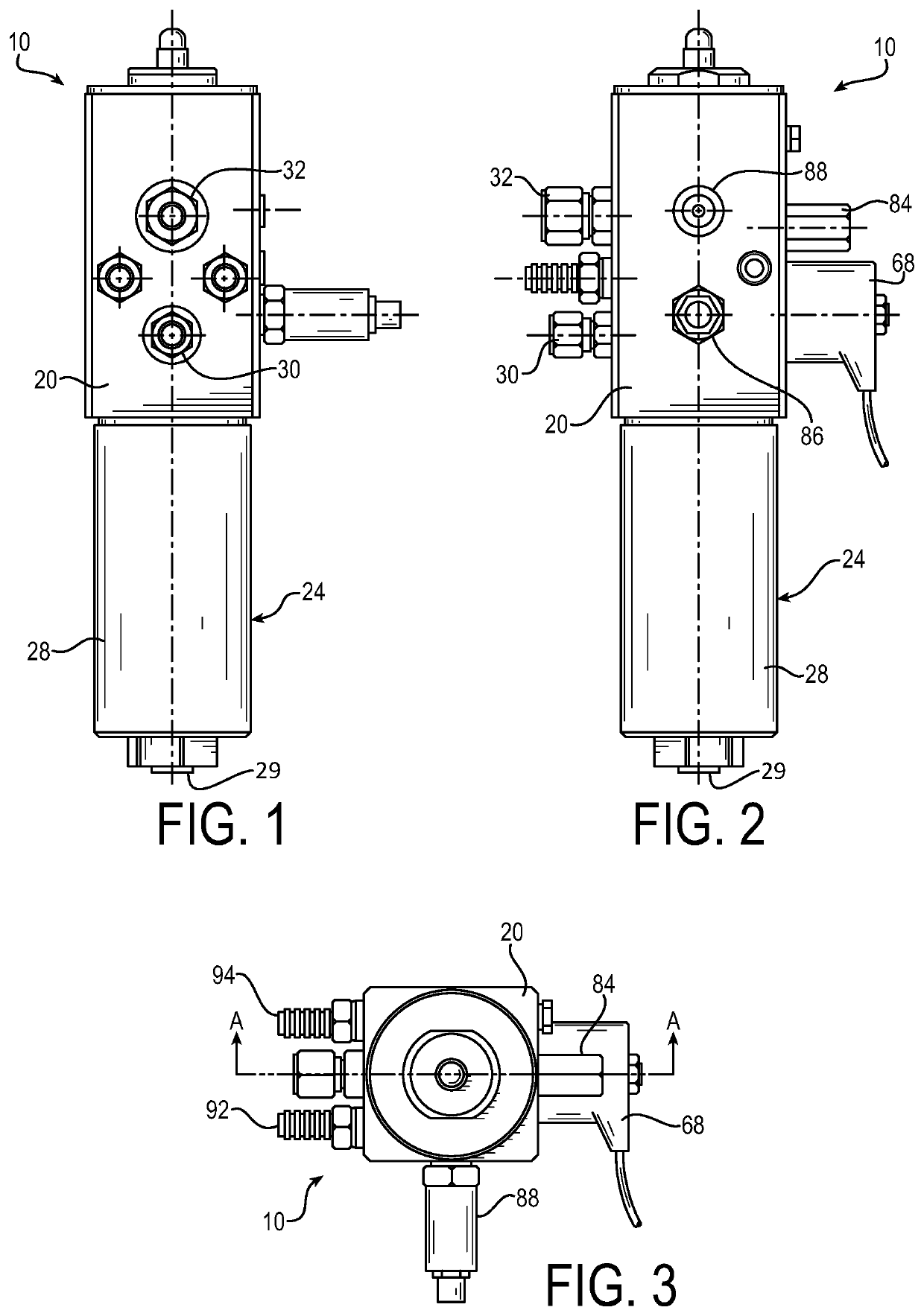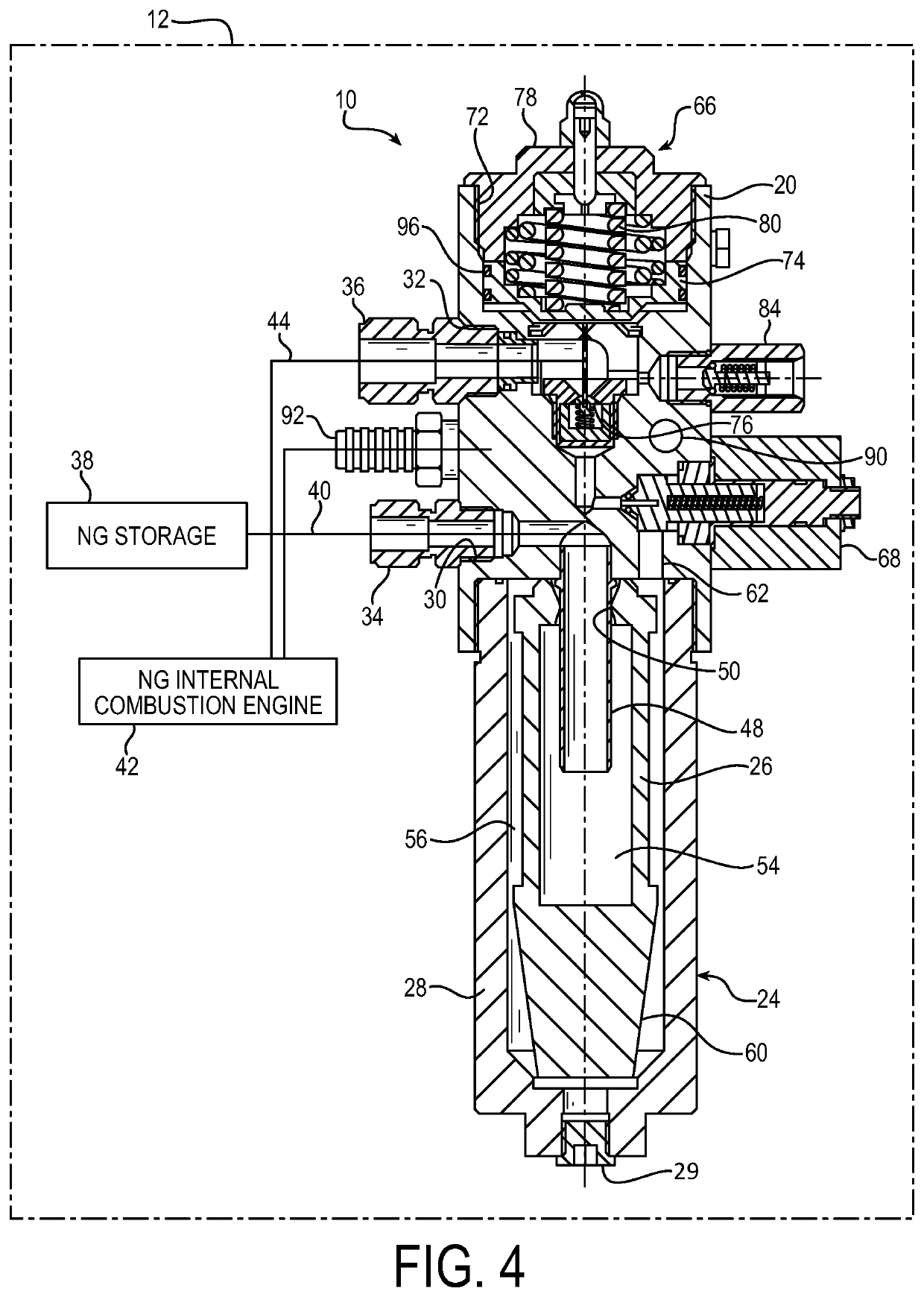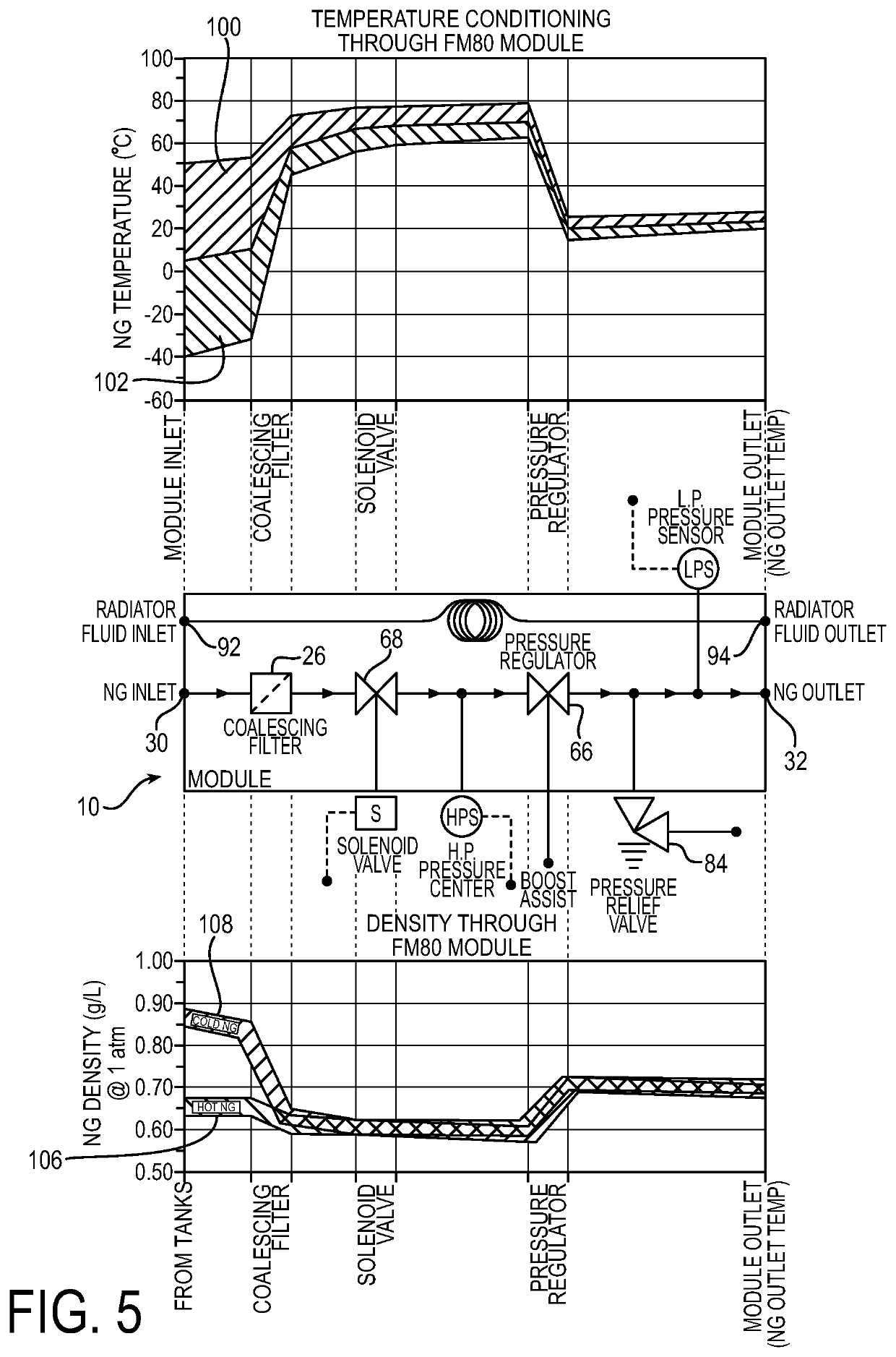Integrated natural gas flow regulation system including fuel temperature homogenization for improved engine performance and reduced emissions
a technology of natural gas flow and homogenization, applied in the direction of machines/engines, combustion air/fuel air treatment, mechanical equipment, etc., can solve the problems of loss of power, inability to limit the range of fuel density provided to the engine, and inability to accurately limit the heating method, so as to improve performance and reduce emissions
- Summary
- Abstract
- Description
- Claims
- Application Information
AI Technical Summary
Benefits of technology
Problems solved by technology
Method used
Image
Examples
Embodiment Construction
[0035]Referring now in detail to the drawings and initially to FIGS. 1-4, an exemplary fuel management module according to the present invention is indicated generally by reference numeral 10. The module is intended for use onboard a natural gas vehicle (NGV) (represented by the broken outline 12 in FIG. 4) for fuel pressure regulation and conditioning of natural gas (NG) temperature for improved engine performance and reduced emissions in the vehicle. Although the module 10 and associated system and method are herein described in relation to conditioning NG in a NGV, it will be appreciated by those skilled in the art that the module, system and method may have other applications, including use with fluids other than NG.
[0036]The module 10 is comprised of a manifold 20 (or more particularly a unitary manifold block) which houses components and subsystems used for the conditioning of NG fuel. The manifold 12 preferably is made of aluminum or another suitable material preferably havin...
PUM
 Login to View More
Login to View More Abstract
Description
Claims
Application Information
 Login to View More
Login to View More - R&D
- Intellectual Property
- Life Sciences
- Materials
- Tech Scout
- Unparalleled Data Quality
- Higher Quality Content
- 60% Fewer Hallucinations
Browse by: Latest US Patents, China's latest patents, Technical Efficacy Thesaurus, Application Domain, Technology Topic, Popular Technical Reports.
© 2025 PatSnap. All rights reserved.Legal|Privacy policy|Modern Slavery Act Transparency Statement|Sitemap|About US| Contact US: help@patsnap.com



